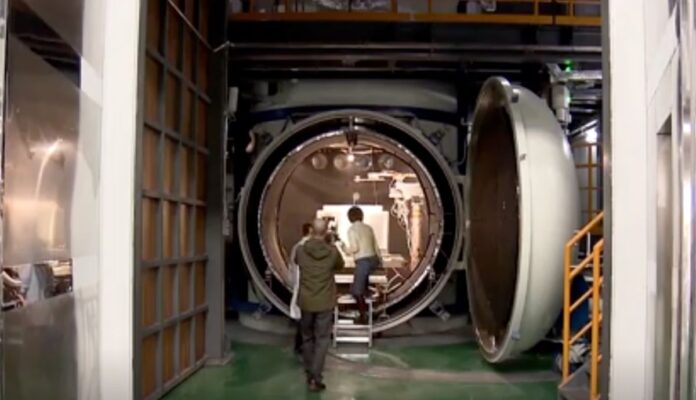Chinese scientists have built a chamber to simulate the conditions on the surface of the moon to help prepare the country for future lunar exploration.
The specially designed vacuum chamber features an electron gun to negatively charge dust, deuterium lights to produce ultraviolet rays to generate low-voltage positive electrical charge, and a vibrating screen designed to simulate flying dust.
Scientists at the facility have made an analogue to dust particles with similar properties to those on the moon. These elements together produce a chamber capable of testing materials and items in simulated lunar conditions.
Related: The latest news about China’s space program
The facility was developed by the Harbin Institute of Technology (HIT), based in the city of Harbin in Heilongjiang province in northeast China.
“The comprehensive lunar surface simulator, which can simulate multiple environments very close to the real state on the moon, helps us [understand] the lunar dust formation mechanism in such an environment and its effects on spacecraft, spacesuits and astronauts and prepare us for a crewed moon landing in the future,” Li Liyi, dean of the HIT’s Institute of Space Environment and Material Science, told CCTV (opens in new tab).
“At the experiment chamber, we can simulate six major kinds of environmental factors. It is an experiment facility that can simulate the most environmental factors and has the comprehensive performance most similar to the real space environment in the world,” Li said.
A leading Chinese lunar scientist said last month that China is working to land astronauts on the moon before 2030. The country is actively working on the hardware needed for the mission, including a new launch vehicle, a new-generation spacecraft for crew and a lunar lander (opens in new tab).
A representative from the China Aerospace Science and Technology Corporation (CASC), the country’s main space contractor, presented an animated sequence earlier this year giving an impression of what the future Chinese crewed lunar landing might look like.
Follow us @Spacedotcom (opens in new tab), or on Facebook (opens in new tab) and Instagram (opens in new tab).

